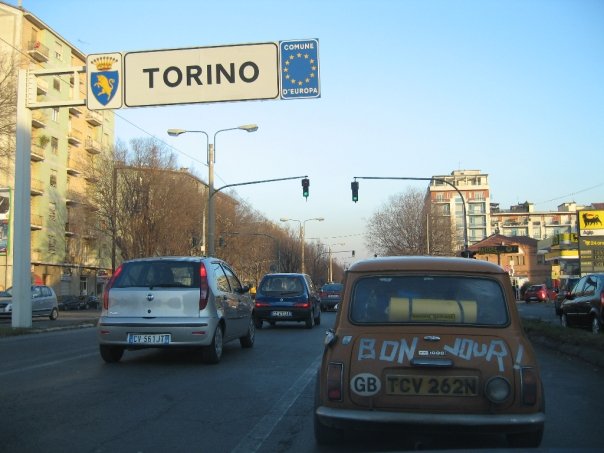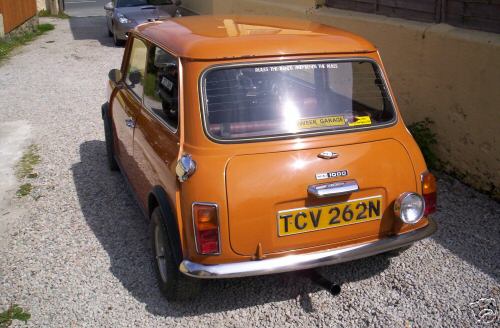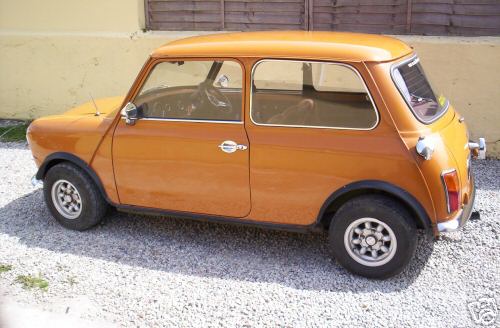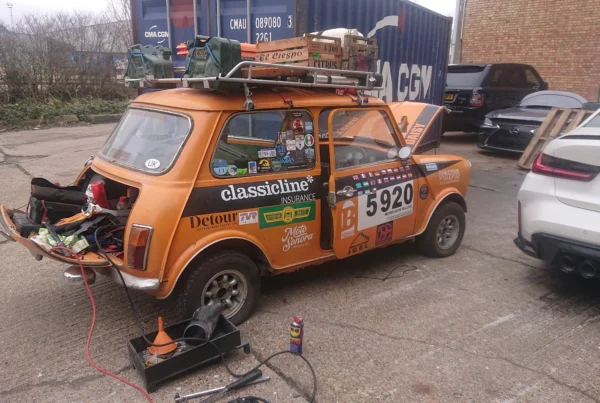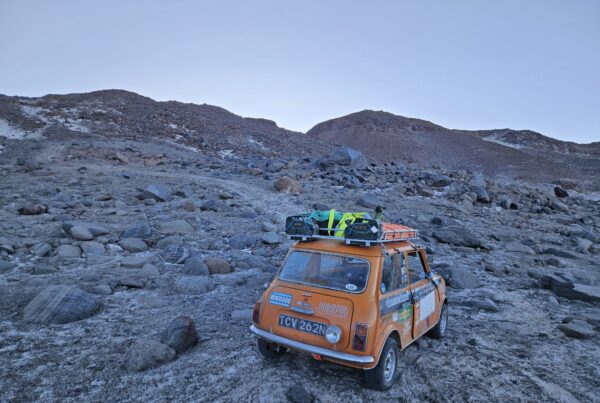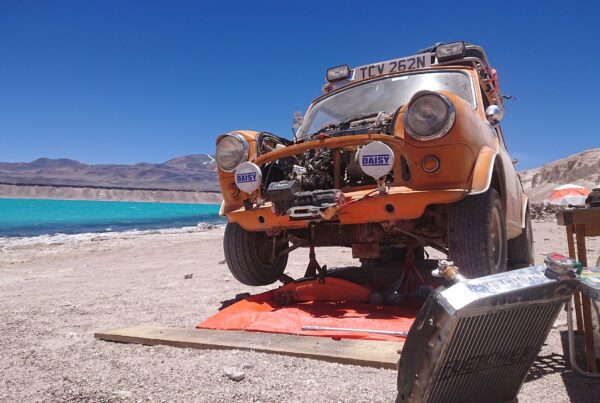ClassicLine’s resident roadtripper, Ben Coombes, is back with a brand-new series of motoring travel blogs. Combined with his love for classic cars, Ben will be bringing us tales of epic road trips, driving adventures and the latest from the Pub2Pub HQ.
For December’s blog post, Ben Coombs brings us up to date on a very old friend.
It was a rainy May night in 2007 when I first saw it.
I was browsing eBay with a dram of Ardbeg Whisky by my side, full of nostalgia for the Mini named Daisy which I’d completed the Mongol Rally in – and then left in Mongolia – the previous year. I fancied another small runabout, something more suited to the nip and tuck of dicing around town than my then-daily driver, a Porsche 944.
I looked at classic Fiat 500s, and 2CVs. I checked out the Renault 4s, and then shuddered as eBay’s Fiat 126 section brought back memories of a previous trip to the Arctic in one. And then I did what I should have been doing all along – I headed to the classic Mini section, and there it was.
An orangey-brown 1974 Mini, liberally festooned with chrome and lurking just over the border in Cornwall. The price? A mere £650. Oh, how I miss those days.
A deal was quickly done, and a few days later I was driving Daisy the Second back home from Camborne, with only a bout of rough running as it approached the Devon border to report – evidently the thought of starting a new life outside the land of the pasty was giving it some thought
But it need not have worried. Given my previous Mini-based gallivanting, the chances of it remaining in Devon for long were slim at best.
This latest Daisy’s first big trip was a five-day run down to Spain and back, which occurred a few weeks after I’d bought it. Now, you may be thinking that five days doesn’t sound like a particularly tight schedule in which to drive to Spain and back, and you’d be right. However, we’d elected to throw in a mid-distance challenge on the trip – a mountaineering ascent of ‘Naranjo de Bulnes’, the Matterhorn of the Iberian Peninsula. This little addition meant that not only would we have to drive the Mini there and back non-stop, but these two legs separated by the two days it would take to hike out to the mountain, break out the ropes and make our ascent to its 2,529 metre-high summit.
In short, it was one of those daft ideas on which all the best road trips are based.
Surprisingly, Daisy took the 2,700 mile round trip in its stride, with only a spot of overheating on the way out, and a shock absorber mounting failure on the return journey, to note – not bad for a spur-of-the-moment purchase which was made a few weeks previously.
But despite this early success, Daisy wasn’t bought to be parked up and pampered, and so its next road trip wasn’t long in coming. Six months later, it was back on the ferry to France.
The idea for this trip was somewhat more predictable than the jaunt to Spain. I’d been sat on the sofa one evening, wondering what to do for New Year as The Italian Job played out on the TV. So, given the circumstances I decided to do the obvious thing – drive the Mini to Turin to see in 2008. And so the die was cast for a 4,000 mile circumnavigation of the Alps, returning via Venice, Slovenia, Croatia and Hungary. And what an adventure it was! Lock-ins every night were mirrored by breakdowns every day, as issues with the cold, the damp and the continuously breaking exhaust worked to slow us down. But despite the rough running, the vapour locking of the fuel tank and the engine’s random reluctance to give more than twenty horsepower, the plucky little Mini made it. With almost no preparation, it had completed almost 7,000 miles of offbeat European running in six months. And what’s more, it was MOT time.
Oh dear.
When your car comes back from an MOT with a list of failures which doesn’t fit onto a single page, you know it’s bad. And so, it was time for a decision.
I’d only paid £650 for Daisy, and I’d certainly got my money’s worth from it. The logical thing to do would have been to cut my losses and scrap it. But in the time in which I’d owned Daisy, no logic had yet crept into the decision making, and its cute, gradually rusting face seemed to say ‘don’t even think about it’. It would be like having an injured puppy put down, when you know that with a bit of effort, you could nurse it back to health. So I bit the bullet. I got it through that MOT, and kept it on the road for another year.
Not that it was driven much, for the year was 2008 and for me, said year was dominated by my plans to drive my old Porsche 944 across Africa. While I worked towards this lofty goal, and then made it happen, Daisy sat patiently by, the rust gradually worsening, the signs of botched work by previous owners becoming all the more evident. But it would be fine, I told myself. Once the Africa trip was done, I’d give Daisy the attention she needed.
On my return from AfricanPorsche, I took Daisy off the road for a quick restoration. But the deeper I dug, the worse the condition of my long-suffering Mini seemed to get. And then other commitments on my time intruded. The book about the Africa drive needed to be written. Money needed to be earned. Other road trips loomed on the horizon; a lap of the Baltic in an old Jaguar, a tour of Morocco in a Rover P6, even a drive to Singapore in a Corvette. And all along, Daisy patiently waited, partially disassembled in a barn, its future uncertain.
Again, I probably should have cut my losses and sold the project on. But logic has never been my strong point when it comes to cars. I’d get around to getting Daisy back on the road one day, I told myself. One day.
But it took the upheaval of a pandemic for that day to come.
Midway through the days of corona, I found myself with no further books which needed to be written, and no road trips on the immediate horizon. So, how to spend my days? It was clearly time to finally give Daisy the attention she deserved, a decade after she’d last been on the road.
Earlier this year, I got down to the job. The strip-down was completed, the subframes removed and the bodywork taken back to bare metal. For much of the past twelve months, I have worked through the cars structure, cutting out the endless rust, and replacing it with solid metal. This task has gone on for months, as somewhere in the region of a quarter of the car’s structure turned out to be rotten. Logically, I should have invested in a re-shell, but I’ve never been one to take the easy option and anyway, if I did that, then it wouldn’t be Daisy. And that’s before considering the extra money a re-shell would cost.
As I worked, my welding and metalwork abilities gradually improved, and my confidence grew in step. Easier jobs gave me the skills to tackle harder tasks, and gradually, the amount of solid metal in the car grew. The whole front end was replaced, most of the floors, the side panels, rear arch areas, much of the boot floor and the rear end too. And with work, there came very visible progress, as the area of the car which was sprayed with etch primer grew until eventually, this month, the grey primer covered the whole car. There was no further rust to repair.
Daisy was solid.
And that’s where the project stands right now. Some further tidying is due before the milestone that is painting the bare shell will be undertaken, and following that, it will be time to get stuck into the next fun stage of the rebuild. Tackling the mechanical side of things, restoring the interior, and getting it all bolted back together again. And then, with many hundreds of hours of effort poured into resurrecting Daisy, it will be time for adventures once again.
And given that those adventures will be mine and Daisy’s first adventures in over a decade, I can’t wait.
2022 is going to be worth the wait…
Remember, if you’re restoring a classic to its former glory, ClassicLine are able to fully insure your project as you restore it. Agreed valuation is also available on laid up insurance policies. Get in touch for further detail on laid up insurance cover.





